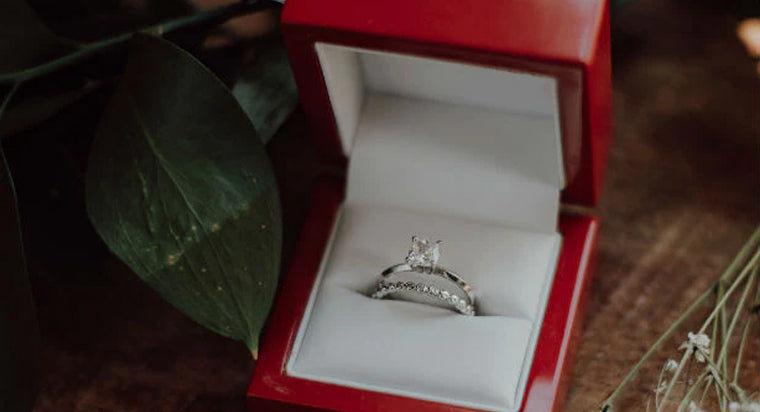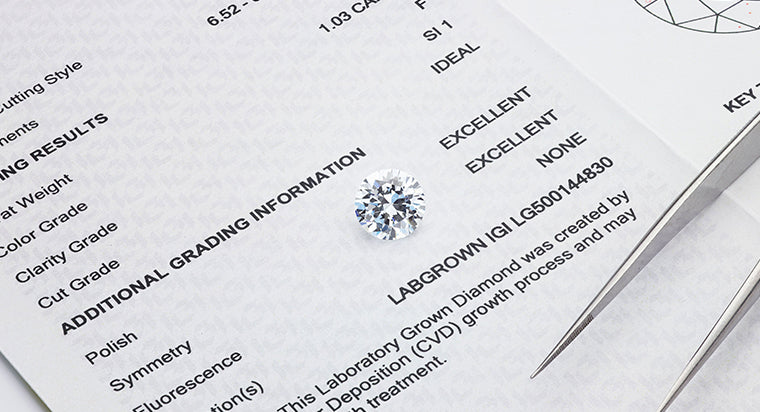The Hope Diamond Story and Curse

The Hope Diamond, a stone as alluring as it is mysterious, is a major draw for all who go to see it. Its discovery brought about terrible fates for seemingly everyone who came into contact with it, leading many to believe that the gem was cursed.
Whether or not the Hope Diamond has mystical powers, it does have a miraculous size. The large diamond weighs 45.52 carats. That is after undergoing a few cuts. Its original weight was marked as 112 carats. This weight is substantial, especially when you consider that this diamond isn’t a traditional colorless diamond but a deep blue. Typically, deep blue diamonds can only be found in small carat weights. The discovery of a blue diamond the size of a man’s fist shocked and dazzled the public.
Who Found the Hope Diamond?
The brilliantly blue and clear diamond has a murky past. It is believed to have been found in India sometime in the seventeenth century. It was found in the Kollur mine in Golkonda, though no one is certain of its exact location. However, the diamond industry in this area and time was at its peak, with the Kollur mine being the most active.
After its discovery, the massive stone ended up with a traveling French merchant named Jean-Baptiste Tavernier, who brought it to Europe from India. At that time, it became known as the Tavernier Blue.
The History of the Hope Diamond
The large diamond faced its first cut in 1168 when it was purchased by King Louis XIV of France and crafted into one of his crown jewels. It worked its way down through the family until Louis XV and his wife, Marie Antoinette. When the couple was beheaded in the French Revolution and their royal treasure pilfered, the Hope Diamond was lost, and its cursed reputation took root.
After all, it was rumored that the man who brought the diamond to Europe, Tavernier, was "torn to pieces by wild dogs in Constantinople.
In 1812, Daniel Eliason, a London diamond merchant, turned up with the elusive blue stone and promptly sold it to Britain’s King George IV. The King was terrible with finances, and the diamond was likely sold off as part of his debt settlement upon his death.
Next, it came under the ownership of Henry Philip Hope, the namesake of the Hope Diamond. He, too, passed away, and his son, Henry Thomas, then eventually grandson, Lord Francis Hope, inherited the stone. Lord Francis Hope would eventually be forced to sell the diamond to pay off his debts in 1901. A series of gem merchants had terrible luck offloading the expensive stone until it finally made its way into Pierre Cartier’s business, the illustrious Cartier Jewelers.
Is the Hope Diamond Cursed?
While being torn apart by wild dogs or beheaded during a revolution are bad enough, other events believed to be a part of the Hope Diamond curse are rumored to have befallen anyone who purchased or even touched the Hope Diamond.
Cartier, who eventually sold the diamond to billionaire Evalyn Walsh McLean, lured her in with the story of how Tavernier actually had stolen the blue gem from the eye (or forehead) of the statue of the Hindu goddess Sita. He went on to regale her on how Nicholas Fouquet, a French official, was beheaded along with Louis XV and Marie Antoinette, Princess de Lambale died at the hands of a vicious French mob, Sultan Abdul Hamid of Turkey lost his throne and his life when he purchased the stone, and a Russian count and actress was shot at onstage while wearing the diamond.
However, Evalyn Walsh McLean would later tell friends that Cartier was just an entertaining and charming man regaling her with stories about the diamond. Nevertheless, after she tried to back out of her agreement to purchase the diamond from Cartier, she, too, had an interesting encounter with the Hope Diamond. She told Cartier that the $180,000 ($5 million today) diamond, now set in an oval frame surrounded by smaller diamonds, needed to be blessed by the church before she could buy it. After all, Thomas Hope’s ex-wife, May Yohe, publicly warned her off of the diamond in a shocking newspaper article.
So, in the church, the diamond was placed on a velvet cushion, awaiting a blessing. Just as Russel Monseigneur was about to bless it, lightning pierced the sky, and thunder shook the building’s foundation. McLean took it as a sign – of good luck. She wore the diamond as her lucky charm. Although her husband ran away with another woman, her son died in a car accident, her family business, The Washington Post, went bankrupt, and her daughter died of a drug overdose.
Where is the Hope Diamond Now?
When McLean died in 1947, she was deeply in debt. In 1949, her jewels, including the Hope Diamond, were sold off. Harry Winston ended up with the mysterious stone. He displayed it for ten years, letting the public enjoy its beauty, before donating it to the Smithsonian Institution in November 1958.
This is where it resides today, in the Harry Winston Room in the Hall of Geology, Gems, and Minerals of the Natural History Museum of the Smithsonian Institution in Washington, D.C. It is surrounded by sixteen white diamonds on a chain of forty-five diamonds, and its last insurance report valued the Hope Diamond worth $250 million.
Before it lay behind its case of glass, it allegedly cursed one more man. The post delivery man who was tasked with delivering Winston’s diamond to Washington, D.C. After he made the delivery, he was in two auto accidents, shattering his leg and suffering a leg wound. After which, he lost his wife and dog to untimely deaths and suffered a house fire.
FAQs
When did people first start believing that the Hope Diamond was cursed?
The man who found the Hope Diamond, Jean-Baptiste Tavernier, was said to be torn apart by wild dogs after “stealing” the diamond from a Hindu statue. From there, its next owners faced injury, death, or debt.
Can the general public view the Hope Diamond?
The general public can view the Hope Diamond in the Harry Winston Room in the Hall of Geology, Gems, and Minerals of the Natural History Museum of the Smithsonian Institution in Washington, D.C.
What’s special about the Hope Diamond?
The Hope Diamond is unnaturally large for its deep blue coloring, weighing in at 45.52 carats even after numerous recuts.
Who owns Hope Diamond, and how much does it cost?
The Natural History Museum of the Smithsonian Institution in Washington, D.C., after receiving it as part of a donation from Harry Winston.







